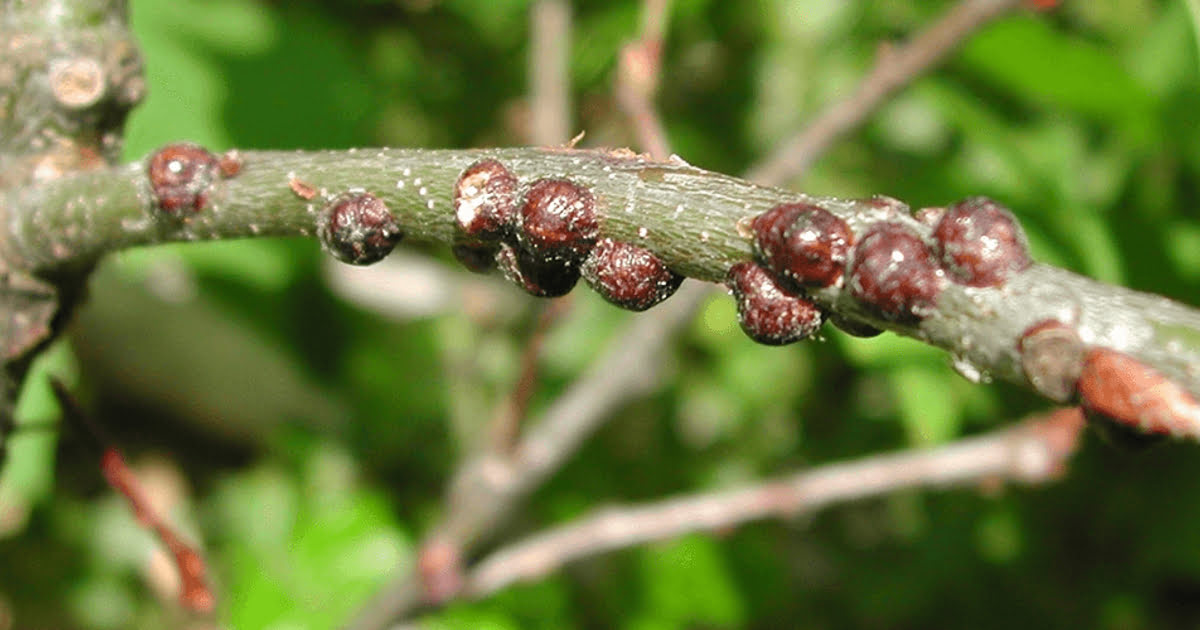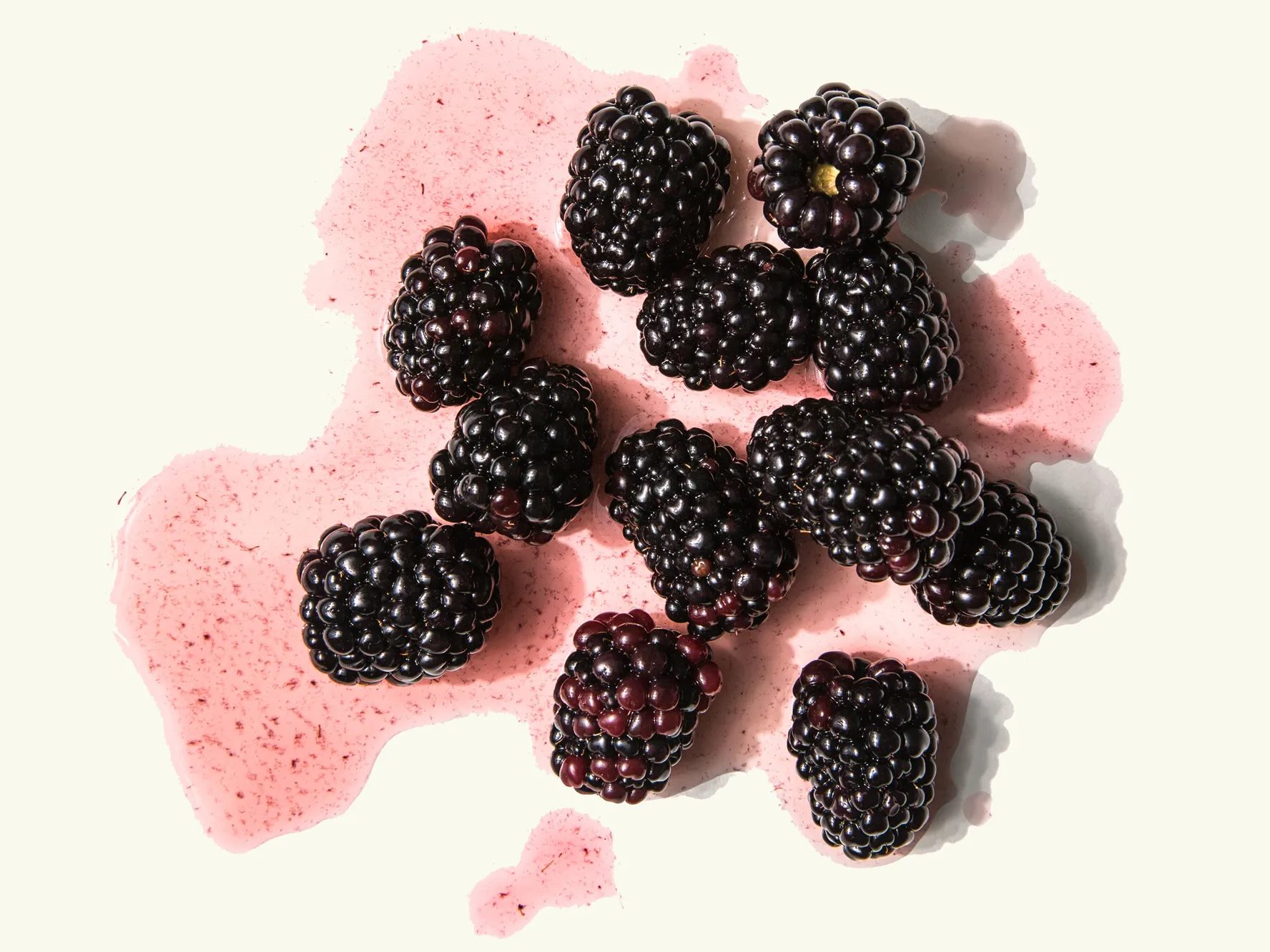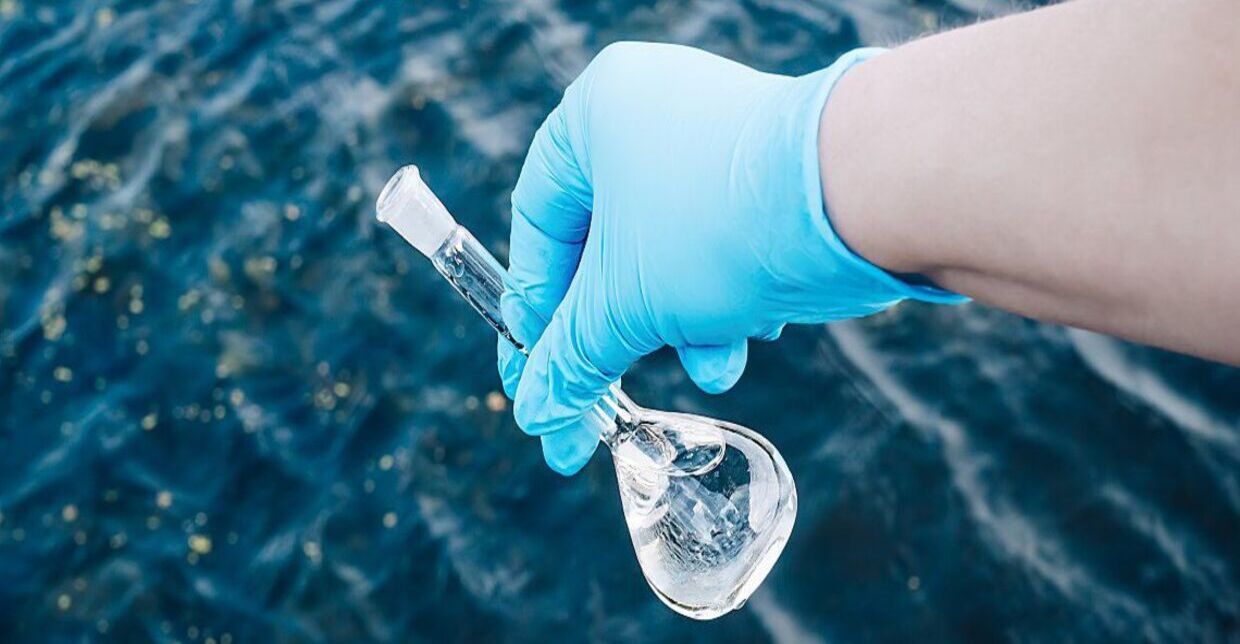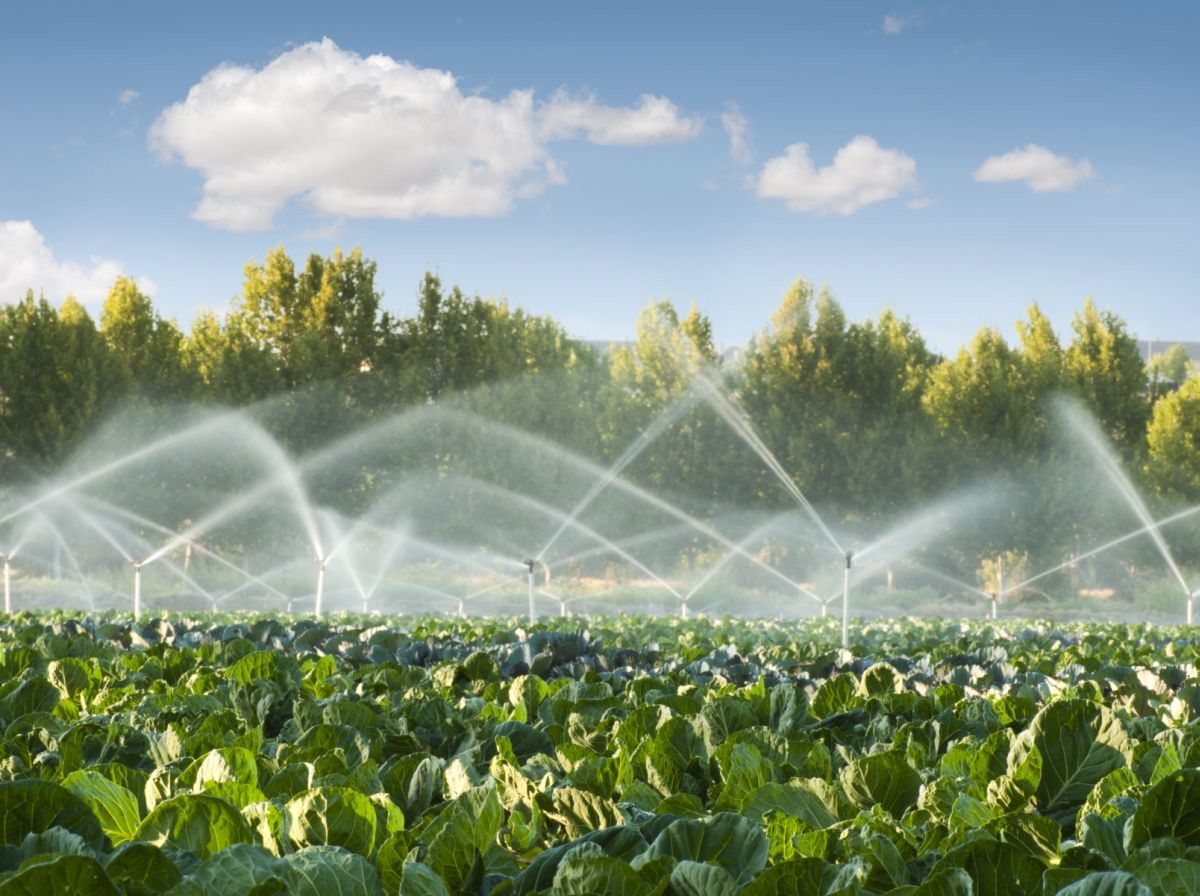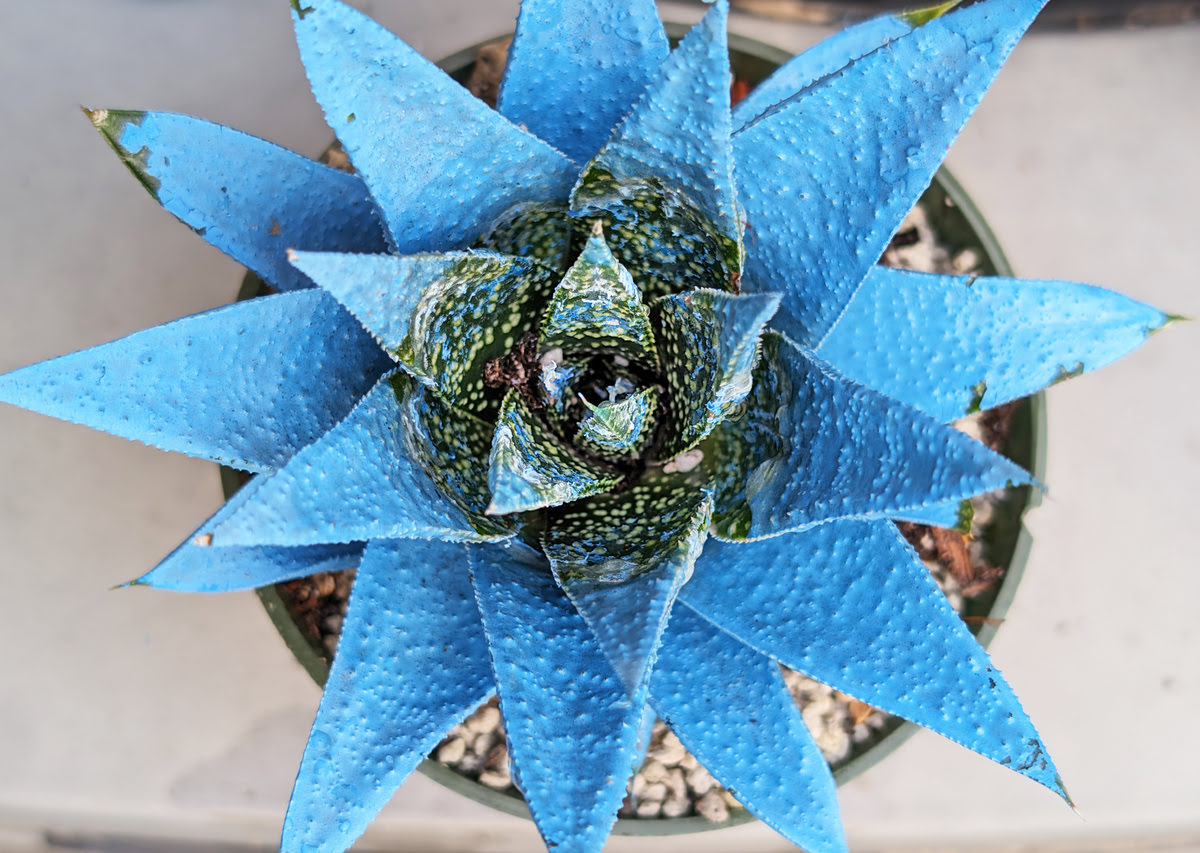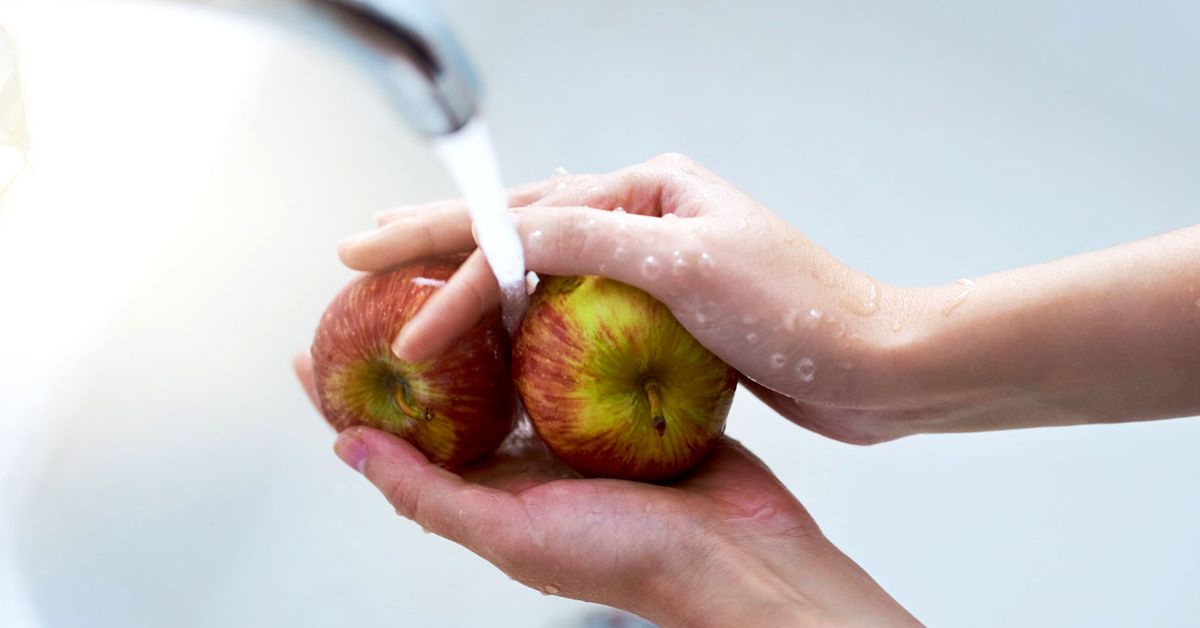Home>Gardening News and Trends>Latest News>How To Remove Pesticides From Water
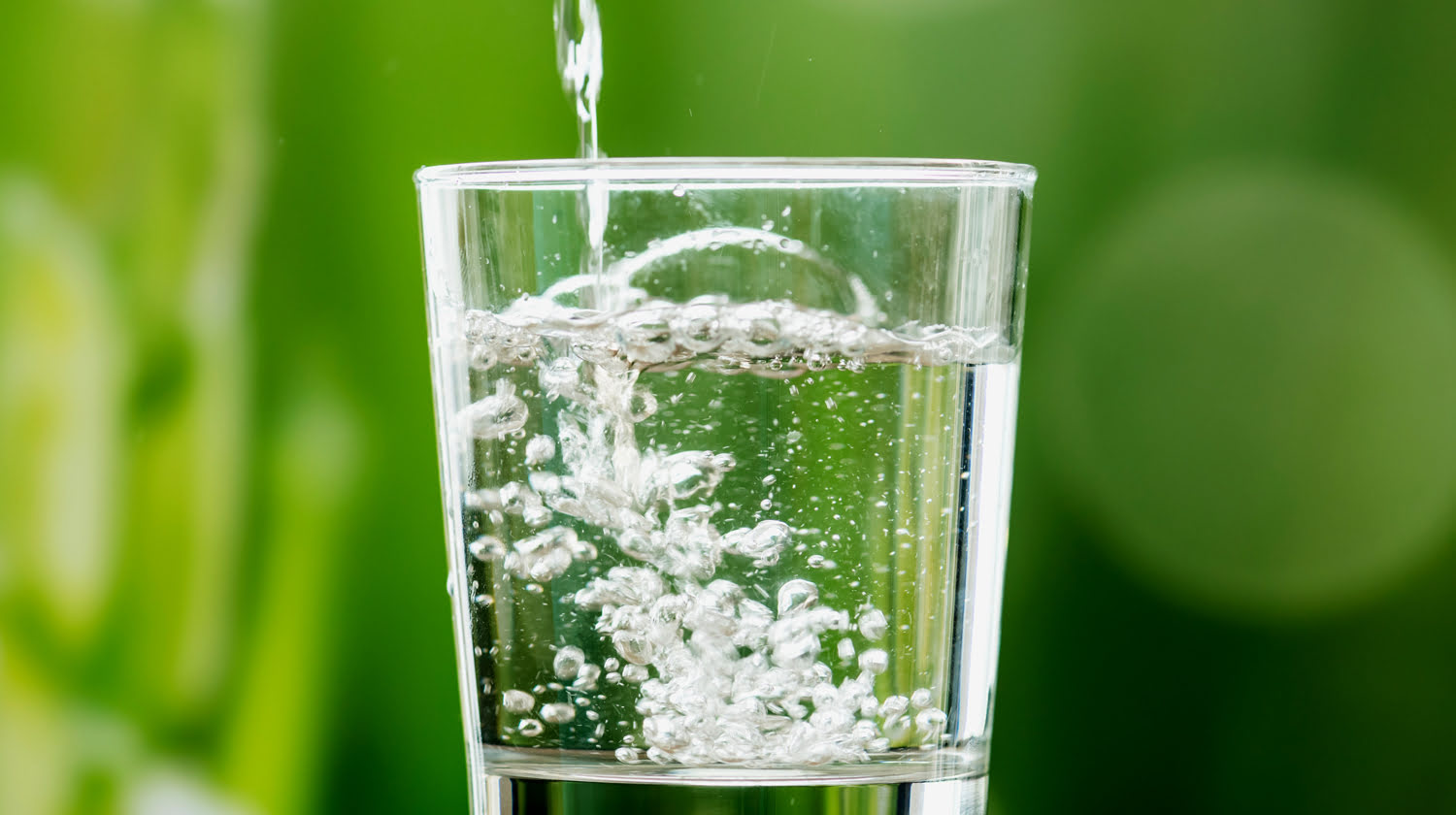

Latest News
How To Remove Pesticides From Water
Published: November 23, 2023
Learn the latest news on how to remove pesticides from water with effective methods and solutions. Safeguard your health and ensure clean, purified drinking water.
(Many of the links in this article redirect to a specific reviewed product. Your purchase of these products through affiliate links helps to generate commission for Chicagolandgardening.com, at no extra cost. Learn more)
Table of Contents
Introduction
Water is essential for human survival, but unfortunately, it can often be contaminated with various pollutants, including pesticides. Pesticides are widely used in agriculture to protect crops from pests and diseases, but their presence in water sources can have detrimental effects on both human health and the environment. Therefore, it is crucial to remove pesticides from water to ensure the safety and well-being of communities.
Pesticides are chemical substances specifically designed to kill or control pests. They can seep into water sources through runoff from agricultural fields, gardens, or industrial activities, or from the improper disposal of pesticide containers. Once in water, pesticides can persist for long periods, posing a significant threat to aquatic life, groundwater supplies, and human consumption.
Exposure to pesticides in drinking water has been linked to numerous health issues, including hormonal disruption, neurological disorders, and certain types of cancer. Additionally, the accumulation of pesticides in the environment can disrupt ecosystems and harm biodiversity. Therefore, it is imperative to implement effective methods to remove pesticides from water sources and ensure the safety of our water supply.
Understanding the Importance of Removing Pesticides from Water
Removing pesticides from water is of utmost importance due to the potential risks they pose to human health and the environment. Pesticides are chemical compounds designed to kill or control pests, but their presence in water sources can lead to severe consequences.
One of the key reasons for removing pesticides from water is to safeguard human health. Pesticides that contaminate drinking water can have detrimental effects on the human body. Studies have shown that prolonged exposure to pesticide-contaminated water can lead to various health problems, including hormone disruption, reproductive issues, developmental disorders, and even certain types of cancer. Children and pregnant women are particularly vulnerable to these risks, emphasizing the need for effective pesticide removal methods.
Furthermore, the impact of pesticides on the environment cannot be overlooked. When pesticides enter water bodies, they can result in ecological imbalances and harm aquatic organisms. Pesticides have the potential to bioaccumulate in the food chain, with detrimental effects on aquatic life, including fish and other aquatic organisms. This disturbance in the ecosystem can have far-reaching consequences, affecting biodiversity and disrupting fragile ecosystems.
In addition to the immediate health and environmental risks, the long-term consequences of pesticide contamination in water are equally significant. Pesticides can persist in water sources for extended periods, leading to persistent contamination. This contamination can hinder the availability of safe drinking water, threatening the livelihoods and well-being of communities. Moreover, persistent pesticide contamination poses challenges for agricultural practices, as it can affect crop productivity and soil quality.
Overall, understanding the importance of removing pesticides from water is crucial in ensuring the health and safety of both individuals and the environment. By implementing effective pesticide removal methods, we can mitigate the risks associated with pesticide contamination and preserve the integrity of our water sources. It is essential to prioritize the removal of pesticides from water to protect human health, maintain a sustainable environment, and secure safe drinking water for present and future generations.
Methods to Remove Pesticides from Water
Removing pesticides from water requires the use of effective treatment methods that can eliminate or reduce pesticide concentrations to safe levels. Here are some commonly used methods for removing pesticides from water:
- Activated Carbon Filtration: Activated carbon, also known as activated charcoal, is a widely used filtration method for removing pesticides. The porous surface of activated carbon can trap and adsorb organic compounds, including pesticides, effectively removing them from the water. This method is often used in conjunction with other filtration processes to enhance water purification.
- Reverse Osmosis: Reverse osmosis is a process that utilizes a semi-permeable membrane to remove contaminants from water. It works by applying pressure to the water, forcing it through the membrane while leaving behind the pesticides and other impurities. This method is highly effective in removing a wide range of contaminants, including pesticides, from water sources.
- Distillation: Distillation involves the heating of water to create steam, which is then condensed and collected as purified water, leaving behind the contaminants, including pesticides. Distillation is a reliable method for pesticide removal, as it effectively separates water from impurities, including volatile organic compounds like pesticides.
- UV Irradiation: UV irradiation is a non-chemical method that uses ultraviolet light to disinfect and remove pesticides from water. UV light exposure deactivates the DNA of microorganisms, including bacteria and viruses, while also breaking down organic compounds, such as pesticides. UV irradiation is commonly used in water treatment facilities to ensure safe drinking water.
- Chemical Oxidation: Chemical oxidation involves the use of chemicals, such as ozone or hydrogen peroxide, to chemically react with pesticides and break them down into less harmful substances. This method effectively removes pesticides by converting them into non-toxic compounds. Chemical oxidation is commonly used in advanced water treatment processes to remove persistent pesticides.
It is important to note that the selection of the appropriate pesticide removal method depends on various factors, including the specific pesticide involved, its concentration in the water, and the overall water quality. Additionally, a combination of methods may be necessary to achieve optimal pesticide removal results.
Activated Carbon Filtration
Activated carbon filtration is a highly effective method for removing pesticides from water. Activated carbon, also known as activated charcoal, is a porous material that has a large surface area, allowing it to adsorb organic compounds, including pesticides, present in water.
The activated carbon filtration process involves passing water through a bed of activated carbon, which traps the pesticide molecules on its surface. The porous structure of activated carbon provides numerous sites for adsorption, enabling it to capture a wide range of contaminants efficiently.
One of the key advantages of activated carbon filtration is its ability to remove not only pesticides but also other organic impurities, such as herbicides, industrial chemicals, and even some heavy metals. This makes it an excellent choice for overall water purification.
Activated carbon filters can be used in various water treatment systems, including point-of-use filters, domestic water filters, and larger-scale water treatment facilities. The filters are available in different forms, such as granular activated carbon (GAC) and powdered activated carbon (PAC), offering flexibility in their application.
However, it is important to note that activated carbon filters have a finite capacity for adsorption. Over time, they become saturated with contaminants, and their effectiveness decreases. Regular maintenance, such as replacing or regenerating the activated carbon, is necessary to ensure optimal performance.
Additionally, activated carbon filters may not effectively remove certain types of pesticides, such as those with low molecular weight or high solubility. In such cases, alternative treatment methods or a combination of filtration methods may be necessary.
Activated carbon filtration is a well-established and reliable method for removing pesticides from water. It offers an affordable and efficient solution for both domestic and commercial applications. By utilizing activated carbon filters, we can significantly reduce pesticide levels in water, ensuring the provision of safe and clean drinking water for individuals and communities.
Reverse Osmosis
Reverse osmosis is a highly effective method for removing pesticides from water. It is a physical process that uses a semi-permeable membrane to separate contaminants from water molecules. The membrane has very small pores that allow water molecules to pass through while trapping larger molecules, including pesticides and other impurities.
The reverse osmosis process involves applying pressure to the water, forcing it through the membrane. As the water passes through the membrane, the pesticides and other contaminants are left behind, resulting in purified water on the other side.
Reverse osmosis is particularly effective in removing a wide range of contaminants, including pesticides, herbicides, heavy metals, bacteria, viruses, and dissolved solids. The process can significantly reduce pesticide concentrations in water, making it safe for consumption.
This method is commonly used in both residential and commercial settings, such as home water filtration systems and large-scale water treatment plants. Reverse osmosis systems can be installed under the sink or used as whole-house purification systems, depending on the specific needs and requirements.
One of the advantages of reverse osmosis is that it does not require the use of any chemicals, making it environmentally friendly. It operates solely on the basis of physical filtration, ensuring that no additional contaminants are introduced into the water during the purification process.
However, it is important to note that reverse osmosis systems can be relatively expensive to install and maintain. They require regular maintenance, including replacement of the membrane and monitoring of the system performance. Additionally, reverse osmosis can result in some water wastage due to the reject water produced during the process.
Despite the associated costs and maintenance requirements, reverse osmosis remains one of the most reliable and efficient methods for removing pesticides from water. Its ability to remove a wide range of contaminants, including pesticides, makes it an excellent choice for ensuring the safety and purity of drinking water.
Distillation
Distillation is a highly effective method for removing pesticides from water. It is a physical separation process that utilizes the difference in boiling points between water and other contaminants, including pesticides. The distillation process involves heating the water to create steam, which is then condensed and collected as purified water, leaving behind the contaminants.
When water is heated, the pesticides and other impurities do not vaporize at the same temperature as water. As a result, the steam that is produced during distillation is primarily pure water, while the contaminants remain in the original liquid or are left behind as residue.
Distillation is a robust and reliable method for removing pesticides because it effectively separates water from impurities, including volatile organic compounds like pesticides. It removes not only pesticides but also other contaminants such as heavy metals, minerals, and bacteria.
One of the major advantages of distillation is that it can produce high-quality purified water. By boiling the water and condensing the steam, most impurities are left behind, resulting in water that is free from pesticides and other contaminants.
However, it is important to note that distillation is a relatively energy-intensive process. Heating the water to create steam requires a significant amount of energy, which can make distillation less feasible for large-scale water treatment. It is more commonly used for smaller-scale applications, such as home distillers or in areas where other water treatment options may be limited.
Additionally, distillation may not remove volatile pesticides with very low boiling points or those that are highly soluble in water. In such cases, alternative treatment methods or a combination of filtration methods may be necessary to achieve optimal pesticide removal.
Despite its energy requirements and limitations, distillation remains an effective method for removing pesticides from water. With its ability to produce high-quality purified water, it is a suitable option for smaller-scale applications where other treatment methods may not be readily available.
UV Irradiation
UV irradiation, also known as ultraviolet disinfection, is a non-chemical method widely used to remove pesticides from water. It utilizes ultraviolet light to disinfect water and break down organic compounds, including pesticides.
The UV irradiation process works by exposing the water to UV light, which deactivates the DNA of microorganisms, such as bacteria and viruses, and breaks down organic compounds, including pesticides. The high-energy UV light disrupts the molecular structure of the pesticides, rendering them ineffective and safe.
UV irradiation is commonly used in water treatment facilities to ensure the safety and purity of drinking water. It is effective in removing a wide range of pathogens, including bacteria, viruses, and protozoa. Additionally, UV irradiation can effectively break down organic compounds, making it an ideal method for pesticide removal.
This method has several advantages, including its chemical-free nature, as no chemicals are added to the water during the process. It is an environmentally friendly method that does not introduce any additional contaminants. UV irradiation is also a relatively fast process, and water treated with UV light does not require additional contact time or post-treatment.
However, it is important to note that UV irradiation is primarily effective against microorganisms and organic compounds. It may not remove particulate matter or non-organic contaminants. Therefore, it is often used in combination with other treatment methods, such as activated carbon filtration, to achieve comprehensive water purification.
Furthermore, the effectiveness of UV irradiation in removing pesticides may depend on various factors, including the specific type of pesticide, its concentration, and the water temperature. Some pesticides may require higher doses of UV light or a longer exposure time to ensure complete removal.
Overall, UV irradiation is a valuable method for removing pesticides from water. Its ability to disinfect water and break down organic compounds, including pesticides, makes it an effective tool in water treatment. By utilizing UV irradiation, we can ensure the provision of safe and pesticide-free drinking water for individuals and communities.
Chemical Oxidation
Chemical oxidation is a method used to remove pesticides from water by introducing oxidizing agents that chemically react with the contaminants, breaking them down into less harmful substances. This process involves the use of chemicals such as ozone, hydrogen peroxide, or chlorine, which have strong oxidizing properties.
Chemical oxidation is effective in removing various organic compounds, including pesticides, by transforming them into non-toxic byproducts through oxidation reactions. These reactions involve the transfer of electrons, resulting in the breakdown and degradation of the pesticides.
One common chemical oxidation method is ozone oxidation. Ozone, a powerful oxidant, is generated and added to the water, where it reacts with the pesticides, breaking them down into carbon dioxide, water, and other harmless byproducts. Ozone oxidation is known for its high efficiency in removing a wide range of pesticides and other contaminants.
Hydrogen peroxide is another chemical commonly used for oxidation. When hydrogen peroxide is added to the water, it reacts with the pesticides, causing them to break down into simpler, less harmful compounds. Similar to ozone oxidation, hydrogen peroxide oxidation is effective in treating a variety of pesticides and other organic pollutants.
Chemical oxidation methods may also involve the use of chlorine or chlorine-based compounds. Chlorine acts as a strong oxidant and disinfectant, effectively reacting with pesticides to neutralize them. However, it is important to carefully control the dosage of chlorine to prevent the formation of harmful disinfection byproducts.
While chemical oxidation can be highly effective in removing pesticides, it is important to consider the potential drawbacks. Chemical oxidation methods may introduce additional chemicals into the water, which must be carefully managed to ensure they do not pose any health risks. Furthermore, the effectiveness of chemical oxidation may vary depending on the specific pesticide and its state (e.g., dissolved or suspended).
Chemical oxidation is often employed as an advanced water treatment method, particularly in larger water treatment facilities. It is essential to carefully evaluate the specific pesticide and water quality characteristics to select the appropriate chemical oxidant and ensure optimal pesticide removal.
In summary, chemical oxidation is a valuable method for removing pesticides from water by utilizing powerful oxidizing agents. Through chemical reactions, pesticides are broken down and transformed into less harmful substances. By employing proper chemical oxidation techniques, we can effectively eliminate pesticides and ensure the provision of safe and clean water for various applications.
Factors to Consider When Choosing a Removal Method
When it comes to removing pesticides from water, several factors need to be considered to determine the most appropriate removal method. These factors can influence the effectiveness, practicality, and cost-efficiency of the chosen method. Here are some key factors to consider:
- Type of Pesticide: Different pesticides have varying chemical properties, solubility, and volatility. Some pesticides may be more effectively removed through certain methods, while others may require a combination of techniques or specialized treatment processes. Understanding the specific characteristics of the pesticide(s) present in the water is essential in selecting an appropriate removal method.
- Water Quality: Assessing the overall quality of the water source is crucial. Factors such as pH, temperature, turbidity, and the presence of other contaminants may influence the effectiveness of certain removal methods. For example, some filtration methods may be less effective in turbid water, while UV irradiation may be less efficient at higher pH levels.
- Concentration of Pesticides: The concentration of pesticides in the water should be considered. If the concentrations are high, more robust and efficient removal methods may be necessary. On the other hand, lower pesticide concentrations may be effectively addressed by less complex treatment techniques.
- Water Usage and Flow Rate: The intended use of the water and the required flow rate can impact the choice of a removal method. Point-of-use systems, such as activated carbon filters or reverse osmosis, may be suitable for small-scale applications, while larger-scale facilities will require more robust treatment options to meet higher demand.
- Cost and Practicality: Different removal methods vary in terms of cost, installation, operation, and maintenance requirements. It is important to consider the budget, available resources, and practicality of each method. Factors such as energy consumption, replacement filters or membranes, and the availability of skilled personnel should be taken into account.
- Regulatory Compliance: Compliance with local, regional, and national regulations is crucial. Some jurisdictions may have specific guidelines or standards for pesticide removal methods in water treatment. It is essential to ensure that the chosen method meets all necessary regulatory requirements.
By carefully considering these factors, a suitable pesticide removal method can be identified that balances effectiveness, practicality, and cost considerations to ensure the provision of safe and clean water.
Conclusion
Ensuring the removal of pesticides from water sources is vital for safeguarding human health, protecting the environment, and ensuring access to clean water. Pesticides can contaminate water through various sources, and their presence can have detrimental effects on both individuals and ecosystems.
We have explored several effective methods for removing pesticides from water, including activated carbon filtration, reverse osmosis, distillation, UV irradiation, and chemical oxidation. Each method has its advantages and considerations, and the choice of the most appropriate method depends on factors such as the type of pesticide, water quality, concentration of pesticides, water usage, cost, and regulatory compliance.
Activated carbon filtration and reverse osmosis are widely used methods, offering effective removal of pesticides and other contaminants. Distillation provides a reliable approach for completely separating water from impurities, including volatile pesticides. UV irradiation is an environmentally friendly and chemical-free method, while chemical oxidation utilizes powerful oxidants to break down pesticides into harmless byproducts.
It is important to note that no single method may be universally suitable, and a combination of techniques may be necessary to achieve optimal pesticide removal. Additionally, regular maintenance and monitoring are crucial for ensuring the ongoing effectiveness of the chosen removal method.
Overall, the removal of pesticides from water requires a comprehensive understanding of the specific pesticide contaminants, water quality characteristics, and available treatment options. By considering these factors and utilizing the appropriate removal methods, we can ensure the provision of safe and clean water for drinking, agricultural practices, and ecosystem sustainability.

